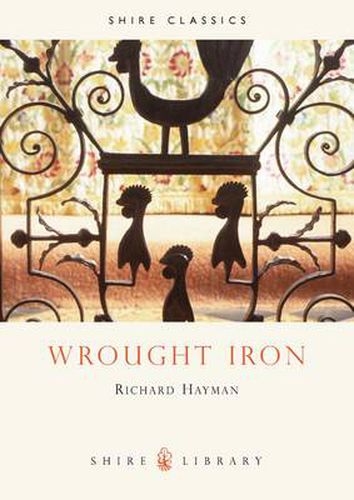Readings Newsletter
Become a Readings Member to make your shopping experience even easier.
Sign in or sign up for free!
You’re not far away from qualifying for FREE standard shipping within Australia
You’ve qualified for FREE standard shipping within Australia
The cart is loading…






Wrought iron has been used as a decorative element in architecture since the eleventh century. Initially used to strengthen and embellish doors, the material was soon adopted for free-standing screens and railings in churches and cathedrals. Towards the end of the seventeenth century iron screens, gates and railings became a fashionable element of country and town houses, resulting in the most creative period of decorative ironwork. Though the cheaper technique of casting led to a subsequent decline in wrought iron, the latter underwent a revival at the end of the nineteenth century, encouraged by its use in the designs of influential architects such as William Burges and Charles Rennie Mackintosh. This book provides an introductory guide to decorative wrought iron, describing how it was made, its context in architectural history and where fine examples remain extant today.
$9.00 standard shipping within Australia
FREE standard shipping within Australia for orders over $100.00
Express & International shipping calculated at checkout
Wrought iron has been used as a decorative element in architecture since the eleventh century. Initially used to strengthen and embellish doors, the material was soon adopted for free-standing screens and railings in churches and cathedrals. Towards the end of the seventeenth century iron screens, gates and railings became a fashionable element of country and town houses, resulting in the most creative period of decorative ironwork. Though the cheaper technique of casting led to a subsequent decline in wrought iron, the latter underwent a revival at the end of the nineteenth century, encouraged by its use in the designs of influential architects such as William Burges and Charles Rennie Mackintosh. This book provides an introductory guide to decorative wrought iron, describing how it was made, its context in architectural history and where fine examples remain extant today.